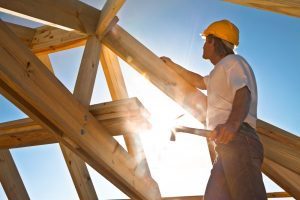
The National Association of Homebuilders said homebuilding was the story of the past decade. Following the Great Recession, the number of homebuilders dropped and housing production was unable to meet buyer demand.
There were 6.8 million single-family housing starts over the last decade, the NAHB states and the housing deficit across the nation continues because of persistent headwinds for builders creating affordability challenges for both renters and buyers.
Of the nearly 7 million housing starts between 2010 and 2019, 1.53 million were custom homebuilding starts, 827,000 townhouse starts, and 300,000 single-family built-for-rent starts.
Fifty-four percent of single-family starts were in the South region and 23% were in the West. The Midwest and Northeast regions accounted for 15% and 8% of the starts, respectively.
“Overall, single-family starts have grown modestly over the past decade. However, that expansion was curbed by occasional soft patches, the first occurring in mid-2010 with the cessation of the stimulus era homebuyer tax credit,” the report says.
The 2010s 6.8 million starts is the lowest figure over the past 50 years. The prior lowest figure was 9.3 million starts during the 1960s. The 2000s saw 12.3 million housing starts and the 1990s saw 11 million starts.
The NAHB said it is “tempting” to attribute construction weakness over the last decade to “residual uncertainty” caused by the Great Recession and demands from Generation X.
“The low levels of production also occurred with falling vacancy rates, declining housing affordability, and rising building costs,” the report states. “These supply-side headwinds held back home construction in the 2010s and resulted in a net housing deficit for the U.S.”
The drop in construction comes during a time when the U.S. population expanded by more than 20 million during the 2010s.
“While this represents a slower rate of growth than that of the 2000s (with a gain of more than 24 million), this increase still marks a solid level of demand for new home construction with a gain of approximately 10 million households,” said the NAHB.

 theMReport.com Your trusted source for mortgage banking news
theMReport.com Your trusted source for mortgage banking news








